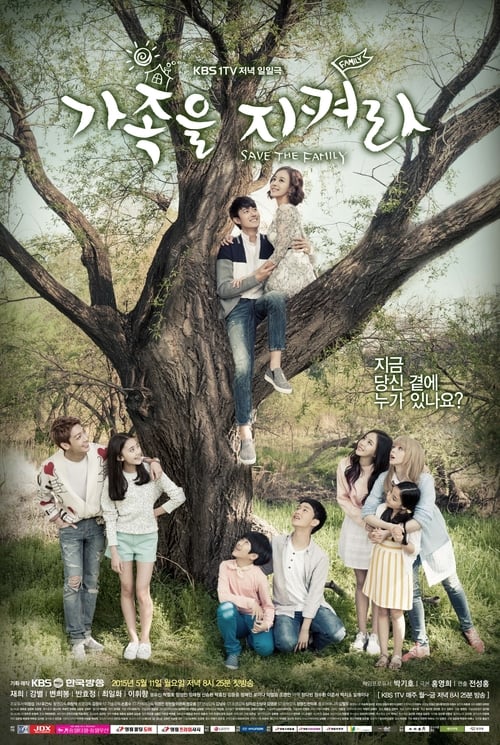
Ask Your Own Question
What is the plot?
In the opening scene of "Save the Family," we are introduced to the central family, the Al-Mansours, who are struggling to maintain their close-knit bond amidst external pressures. The father, Khaled, is a hardworking man trying to provide for his family, while the mother, Layla, is a nurturing figure who keeps the household together. Their three children, Amina, Omar, and little Sara, each have their own dreams and aspirations, which often clash with the family's expectations.
As the story unfolds, Khaled receives news that his job is at risk due to company downsizing. This news creates tension within the family, as Khaled feels the weight of responsibility to keep them financially secure. Layla, sensing Khaled's stress, tries to reassure him, but the strain begins to show in their interactions. Amina, the eldest daughter, is particularly affected by her father's worries, as she is preparing for a scholarship that could change her life.
In a pivotal scene, Khaled decides to take on a second job to alleviate their financial troubles. This decision leads to him working long hours, which causes him to miss important family events, including Omar's soccer game. The children begin to feel neglected, and Layla struggles to keep the family united. Amina confronts her father about his absence, leading to a heated argument where Khaled expresses his frustration about the family's lack of understanding of his sacrifices.
As the family dynamics shift, Layla takes it upon herself to organize a family outing to reconnect with each other. They go to a local amusement park, where they share moments of joy and laughter, temporarily easing the tension. However, the outing is cut short when Khaled receives a call about a potential job opportunity that requires him to leave immediately. This decision further alienates him from his family, as they feel he prioritizes work over them.
Meanwhile, Omar, feeling the pressure of his father's expectations, begins to act out at school. He gets into trouble for skipping classes to hang out with friends. Layla discovers this and tries to talk to him, but he shuts her out, feeling that no one understands the pressure he is under. This subplot highlights the generational gap and the struggle for identity within the family.
As the story progresses, Khaled's second job leads him into a morally ambiguous situation where he is asked to compromise his values. He grapples with the decision, torn between providing for his family and staying true to his principles. This internal conflict culminates in a dramatic confrontation with his boss, where Khaled ultimately decides to quit, prioritizing his integrity over financial gain.
The climax of the story occurs when a family crisis strikes. Sara, the youngest, falls seriously ill, and the family must come together to support her. This event forces Khaled to reevaluate his priorities and realize the importance of family over work. The emotional turmoil brings the family closer, as they rally around Sara, showcasing their love and resilience.
In the resolution, Khaled finds a new job that allows him to balance work and family life better. He makes a heartfelt apology to his children for his previous absences and promises to be more present. The family begins to heal, and they establish new traditions that prioritize their time together. The final scenes depict the Al-Mansour family enjoying a simple dinner, filled with laughter and connection, symbolizing their renewed commitment to one another.
What is the ending?
In the ending of "Save the Family," the family faces a critical moment of reckoning. After a series of conflicts and revelations, they come together to confront their issues. The resolution leads to a newfound understanding among the family members, allowing them to reconcile their differences and strengthen their bonds. Each character finds a path forward, embracing their roles within the family unit.
As the final scenes unfold, we see the family gathered in their home, a place that has been both a battleground and a sanctuary throughout their journey. The atmosphere is tense yet hopeful. The eldest sibling, who has often taken on the role of the mediator, stands up to address the family. With a shaky voice, they express the pain of the past but also the desire for healing. The camera captures the expressions of each family member, revealing a mix of regret, longing, and a flicker of hope.
The next scene shifts to the parents, who have been at odds for much of the series. They sit together, the weight of their shared history palpable in the air. The father, once distant and consumed by his own struggles, finally opens up about his fears and failures. The mother, who has often felt alone in her battles, responds with empathy, acknowledging her own shortcomings. This moment of vulnerability marks a turning point, as they begin to communicate openly for the first time in years.
Meanwhile, the younger siblings, who have often felt overshadowed by the older ones, find their voices. They share their perspectives, revealing the impact of the family's turmoil on their own lives. Their honesty brings tears to the eyes of the older siblings, who realize the importance of listening and supporting one another.
As the family continues to talk, the scene transitions to a montage of shared moments: laughter, tears, and embraces. The music swells, underscoring the emotional weight of their journey. Each character is shown in moments of reflection, contemplating their roles and the love that binds them despite their differences.
In the final moments, the family gathers for a meal, a symbolic act of unity. They share stories, reminisce about happier times, and express their hopes for the future. The camera pans out, capturing the warmth of the scene, as the family sits together, a stark contrast to the isolation they once felt.
The series concludes with a sense of closure, yet leaves room for growth. Each character has faced their demons and emerged stronger, ready to embrace the challenges ahead as a united family. The fate of the main characters is one of reconciliation and hope, as they commit to supporting one another in their journey forward.
Is there a post-credit scene?
In the 2015 TV show "Save the Family," there is no post-credit scene. The series concludes its narrative without any additional scenes after the credits roll. The final moments of the show focus on the resolution of the main characters' arcs, emphasizing themes of family unity and reconciliation. The absence of a post-credit scene allows the audience to reflect on the journey of the characters and the lessons learned throughout the series.
What challenges does the family face in their day-to-day life throughout the series?
The family faces numerous challenges, including financial struggles, interpersonal conflicts, and the pressures of maintaining their family business. Each member deals with their own personal issues, such as the parents trying to keep their marriage intact while managing their children's rebellious behavior.
How does the character of the eldest sibling evolve over the course of the series?
The eldest sibling starts as a rebellious teenager who often clashes with their parents. As the series progresses, they experience significant growth, learning the importance of family and responsibility, ultimately stepping up to help resolve conflicts and support their younger siblings.
What role does the family business play in the dynamics of the family?
The family business serves as a central plot point, often causing stress and tension among family members. It becomes a source of conflict as different members have varying opinions on how it should be run, leading to disagreements that test their relationships.
How do the parents' relationship issues impact their children?
The parents' relationship struggles create a tense home environment, leading to misunderstandings and emotional distance between them and their children. The children often react to their parents' conflicts in different ways, with some acting out while others try to mediate, showcasing the ripple effects of adult issues on the younger generation.
What significant events lead to turning points in the family's relationships?
Key events such as a financial crisis, a health scare, and a family member's unexpected departure serve as turning points that force the family to confront their issues. These moments lead to heartfelt conversations, revelations, and ultimately, a deeper understanding of each other, reshaping their relationships.
Is this family friendly?
"Save the Family," produced in 2015, is a drama that explores complex family dynamics and societal issues. While it aims to depict the struggles and resilience of a family, there are several aspects that may be considered objectionable or upsetting for children or sensitive viewers.
-
Emotional Turmoil: The show delves into themes of loss, betrayal, and conflict within the family, which can evoke strong emotional responses. Characters often experience intense feelings of sadness, anger, and frustration.
-
Conflict and Arguments: There are numerous scenes featuring heated arguments and confrontations between family members, which may be distressing for younger viewers.
-
Societal Issues: The series touches on topics such as poverty, crime, and social injustice, which may be difficult for children to understand or process.
-
Depictions of Struggle: Characters face significant hardships, including financial difficulties and personal crises, which can be heavy themes for sensitive audiences.
-
Mature Themes: While not graphic, the show does address adult themes that may not be suitable for younger viewers, including relationship issues and moral dilemmas.
Overall, while "Save the Family" aims to convey messages of hope and resilience, its exploration of serious themes and emotional conflicts may not be appropriate for all audiences, particularly children.































